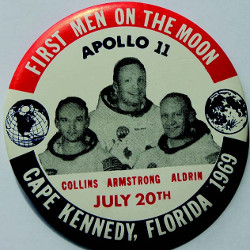Beethoven, Regolith, and You

 Sure, we have lots of problems here on earth. But that’s no reason not to send men and women to further explore the moon. To reword the oft-quoted phrase, we need to go there not because it is easy, but because it is hard. Getting there is hard. Staying there for an extended period might be even harder. What do you breathe? What do you eat? Where do you live? What do you do about the dust? The dust? Say what?
Sure, we have lots of problems here on earth. But that’s no reason not to send men and women to further explore the moon. To reword the oft-quoted phrase, we need to go there not because it is easy, but because it is hard. Getting there is hard. Staying there for an extended period might be even harder. What do you breathe? What do you eat? Where do you live? What do you do about the dust? The dust? Say what?
The moon is covered by a thick layer of material called regolith. And regolith contains dust. Lots of dust. Take a look at some of the Apollo photographs. The astronauts’ spacesuits are dirty with dust. When a fender on their lunar rover failed, it was mission-critical to rig up a replacement (using lunar maps) to prevent the dust from kicking up everywhere. The famous photographs of boot prints in the lunar dust are historic, but they spell trouble.
In particular, regolith contains lunar topsoil pulverized by meteors, heated and fused to create tiny glass shards. Without an atmosphere with wind and rain to erode them, the edges of the particles remain razor sharp. Outside a lunar habitat, dust kicked up from ship landings and construction would cover solar panels and other instruments. Since it absorbs radiant heat from sunlight, it could cause equipment to overheat. Inside a habitat, dust could lead to serious respiratory problems. The astronauts later reported that back inside the lunar module, dust from their spacesuits, which oddly enough smelled like gunpowder, made their eyes burn. After returning from the moon, astronaut Gene Cernan said, “I think dust is probably one of the greatest inhibitors to a nominal operation on the moon.”
What do you do about the dust? One solution is in the air around you right now: sound. For example, if you are listening to music, the vibrations from your loudspeakers cause the air to vibrate, which causes your eardrums to vibrate. But there is no air on the moon, so let’s ignore air for a moment. Consider that the acoustic power from the amplifier is causing your speaker cabinet to vibrate. Crank it up a little and rest your fingers on the cabinet. Better yet, set your wine glass on the cabinet. If it has a slight tilt, the glass might walk to the edge and fall off.
The same trick might be considered to combat lunar dust. Transducers inside instruments and gear such as solar panels could literally shake off the dust. We need to study the problem, and to discover what works best. A steady tone, a warble tone, a glide tone? Sonic? Ultrasonic? How loud? Who knows — maybe music would be a good multi-frequency, multi-amplitude vibration source. We could play it as loud as we want; there is no air on the moon, so there would be no sound. Plenty of vibration, but the moon is a silent world.
The year is 1802. Beethoven is sitting at his desk writing a letter to his brothers, a letter he will never send, a letter now known as the Heiligenstadt Testament. He is in despair, and perhaps is even contemplating suicide. He is becoming deaf, the worst thing that can happen to a musician. As the years pass, he becomes almost completely deaf. People converse with him not by talking, but by writing their comments in notebooks which he can read. Deafness defeats his brilliant career as a concert pianist and he withdraws from society. While a tragedy for him, it is a gift to mankind because he will fully turn to composition to fulfill his creative destiny, in silence.
Because Beethoven is a musician, he doggedly continues to play the pianoforte, an instrument he can no longer hear. He takes a pencil and clenches one end firmly between his teeth and presses the other end against the pianoforte. The vibrations travel from the instrument up through the wooden stick, and through to his jaw and skull. He can “hear” the vibrations as the hammers strike the strings.
In my mind, in his silent world, the piece Beethoven is playing on this particular evening is the Piano Sonata No. 14 in C-sharp minor, better known as the Moonlight Sonata.
Ken C. Pohlmann is an electrical engineer specializing in audio topics as a consultant and writer. He is Professor Emeritus at the University of Miami.


























































